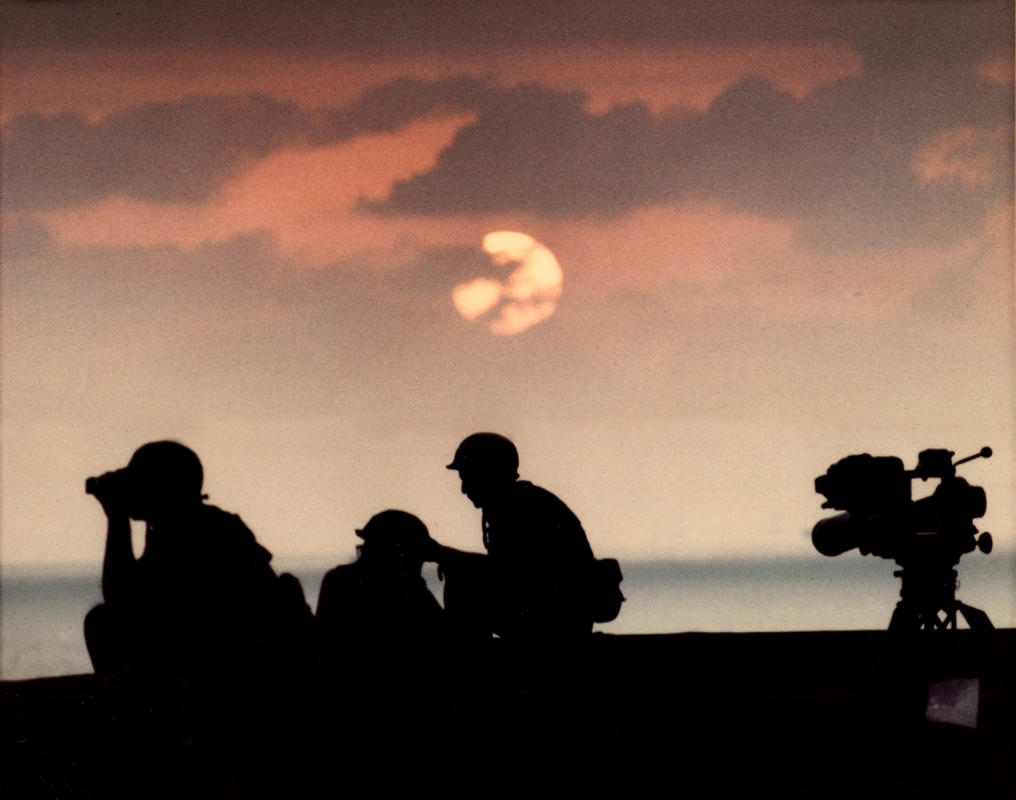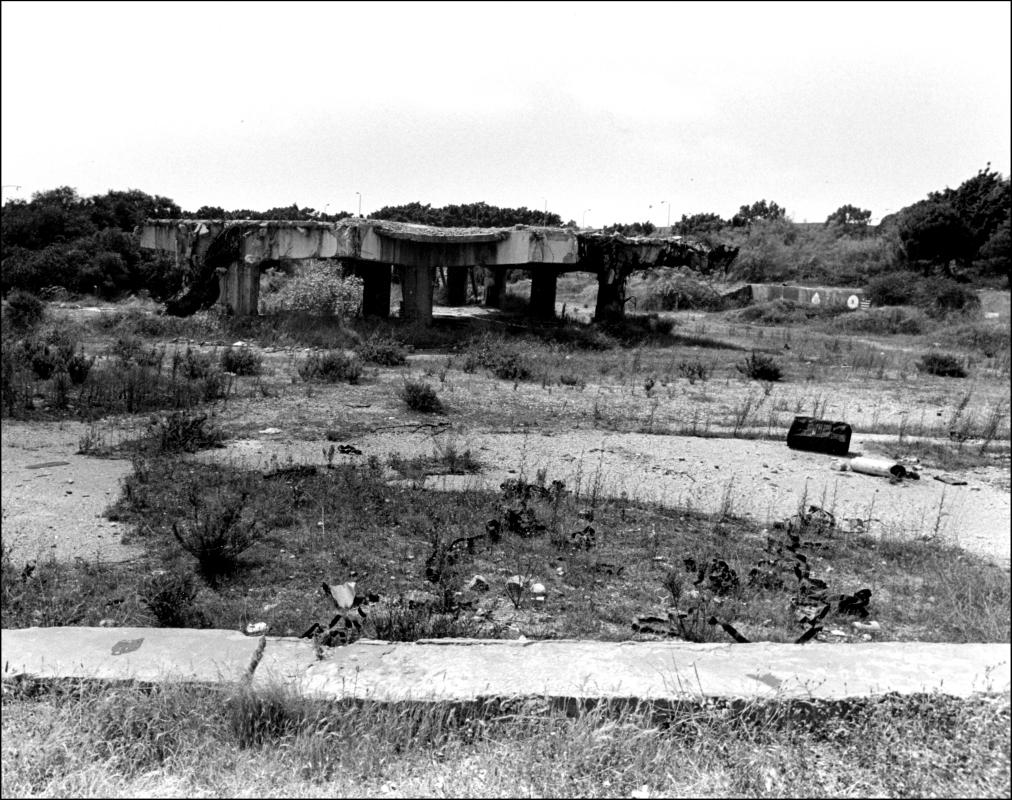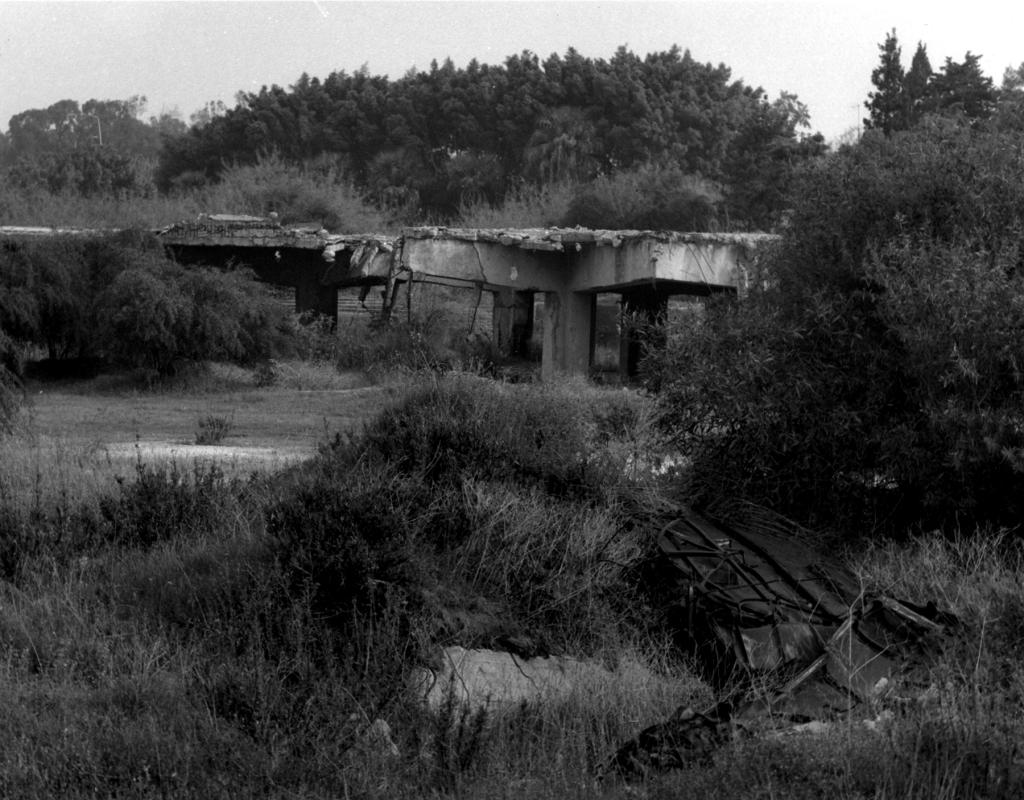40 years ago, a Shiite moslem suicide bomber drove a bomb masquerading as a truck into the US Marine battalion landing team headquarters at Beirut airport, killing 241 US Marines at about 0600 on Sunday morning, October 23, 1983.
Hard to miss the sound of the blast. Then the phone in my apartment started ringing.
The AP office was on the line, telling me that the Marines at the airport had been attacked with a bomb, and that the French headquarters had also been attacked. Moments later, Terry Anderson, the AP bureau chief who lived in an apartment upstairs, and I were on the road to the Marine base at Beirut airport.As we got closer to the base on the airport road, I couldn’t see the top of the 4 story Marine Battalion Landing team HQ. I turned to Terry and said It’s gone! Terry asked -What’s gone? The BLT I said.Seconds later we arrived at the base. In front of us was a scene out a war movie. People were screaming, smoke covered everything making it hard to see. The former 4 story BLT building was now reduced to a story and a half of rubble. The bomber had driven into the center atrium of the building and set the bomb off, bringing the building down. News traveled fast and the Beirut based foreign and Lebanese press had gathered at the scene. TV crews, photographers and writers were walking around the site, recording the carnage.
US Marine Major Bob Jordan, the head of the Marine Corps PAO office arrived and corralled everyone to the front of his office to bring order to the press coverage. His office and parking lot, was approximately 50 yards North of the Battalion Landing Team HQ that now looked more like Dante’s 3rd circle in the Inferno than the building I had spent so much time in, spending countless hours and occasionally spending the night as I covered the activities of the Marine Corps personnel based in Beirut and labeled “Peacekeepers”.The following days and weeks would be spent at the site, photographing the wreckage as well as hearing the stories of the victims and survivors.
On that first day of the bombing, I had been chosen along with other journalists to be part of the first group that would be escorted around the site. Walking slowly South toward the building, one stepped carefully, watching the ground in front of you for victims and debris. When we were close enough, the tv crews started rolling and the photographers and writers made photographs and took notes as we walked along, being led the by a Marine with the Public affairs office. As we reached the West side of the destroyed building, there was a flurry of activity in front of us and the group stopped as we recorded rescuers carefully removing a Marine survivor on a stretcher from the rubble. This would be one of the few bright moments on an otherwise dark day despite the Mediterranean sunshine.
Later that afternoon as I was talking to Marines in the parking lot outside the PAO office, twenty one year old Lance Corporal Robert Calhoun comes up to me, gives me a big hug, looks at me, as he says “WHY ME?” He was distraught over the fact that he had survived, while his friends had not. Robert had been on duty on the roof of the building and had seen the truck with the bomb blow throw through checkpoint just outside the building. Seconds later, the blast went off. He managed to remain on his feet and rode down the collapsing building like an elevator to hell. Stepping off the rubble, his ears bleeding from the concussion of 12,000 pounds of explosives going off underneath him, he said his only goal was to find help for his friends who were underneath the rubble.
Now it was hours later, and as he told me of his experience, I had few words to comfort him. We hugged again and then he left to find someone to tell him what he should do now. The following days and weeks were spent covering the Marines as they continued the search for survivors and cleaned up the site.
The Beirut based media spent most of their time at the Marine Base until a PLO war began in Tripoli, North Lebanon in early November of 1983 between Yasser Arafat’s Fateh fighters and Syrian backed PLO factions fighting for control of the Palestinian camps in Tripoli.
In April of 1993, ten years after the US Embassy on the corniche in West Beirut was attacked on April 18, and the Marine base was attacked on October 23, AP correspondent Earleen Fisher and I returned to Beirut to do a series of stories on the decade anniversary. In addition, we did a series of stories on the general situation in Lebanon after Syrian President Hafez Assad had “ended” the Lebanese civil war that had been going on since 1975.
Flying into Beirut over the Mediterranean Sea, I looked down and could see the empty area South of the new Beirut Airport terminal, once occupied by the US Marine Peacekeeping operation at the airport. Flying into Beirut in 2008, I noted that most of the area once occupied by the Marines had been swallowed up by new airport construction.
In October of 1993, I traveled to Camp Lejeune for the Marine ceremony remembering the lives lost in 1983. There I reconnected with the Marines I had worked with in Beirut ten years earlier. Three photographers, Claude Salhani, Chas Cancellare and I attended the events at Camp Lejeune and raised a few glasses to remember those we lost in 1983.
Now, it’s the 40th anniversary of the attack on the Marine base that took the lives of 241 US Marines.
US Embassy personnel and the Marines serving with the embassy in Beirut today are having a series of events to remember 1983.
There is also a Memorial Observance at Camp Lejeune North Carolina, at the Beirut Memorial, Lejeune Memorial gardens on October 23, 2023 at 10am. To Honor and Remember those lost in Beirut in 1983.







